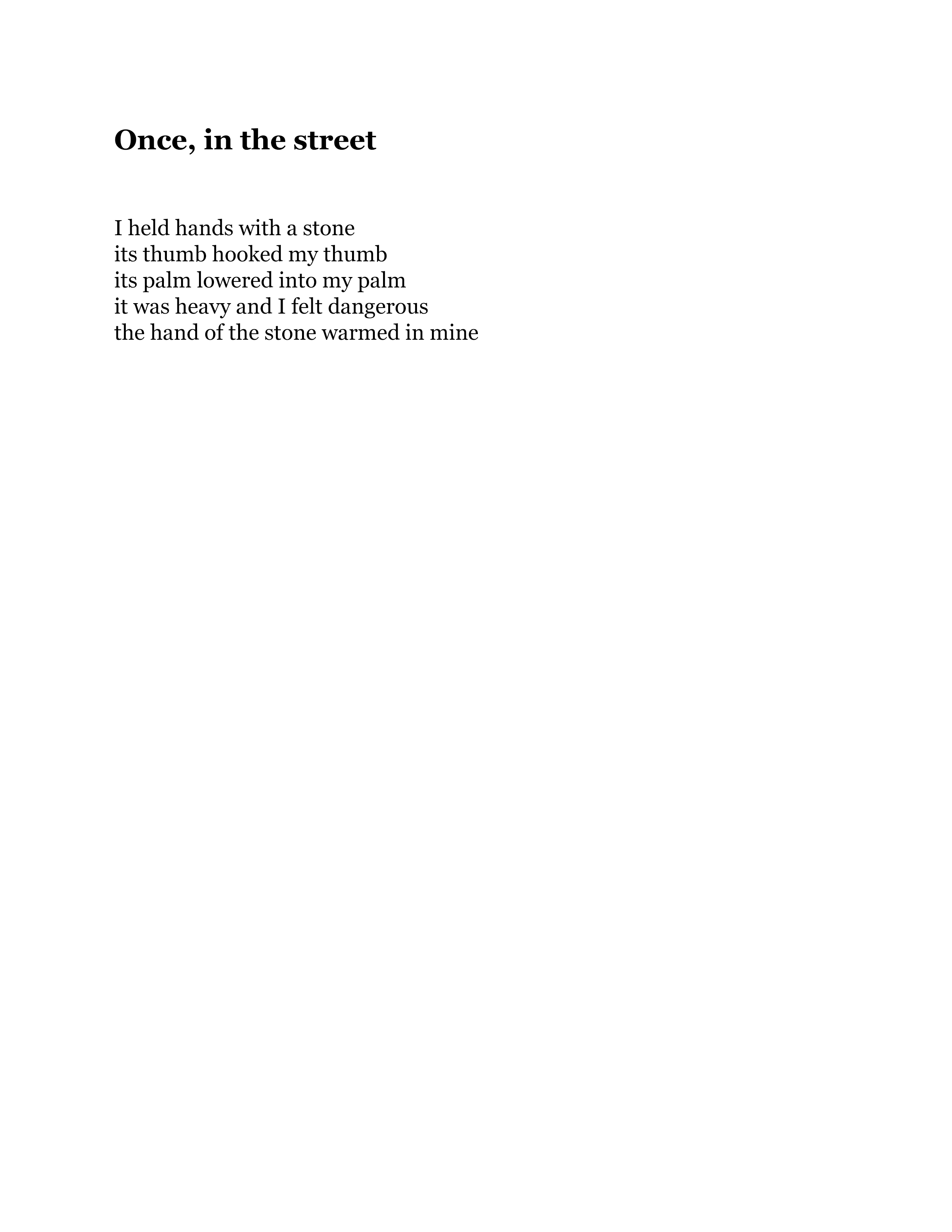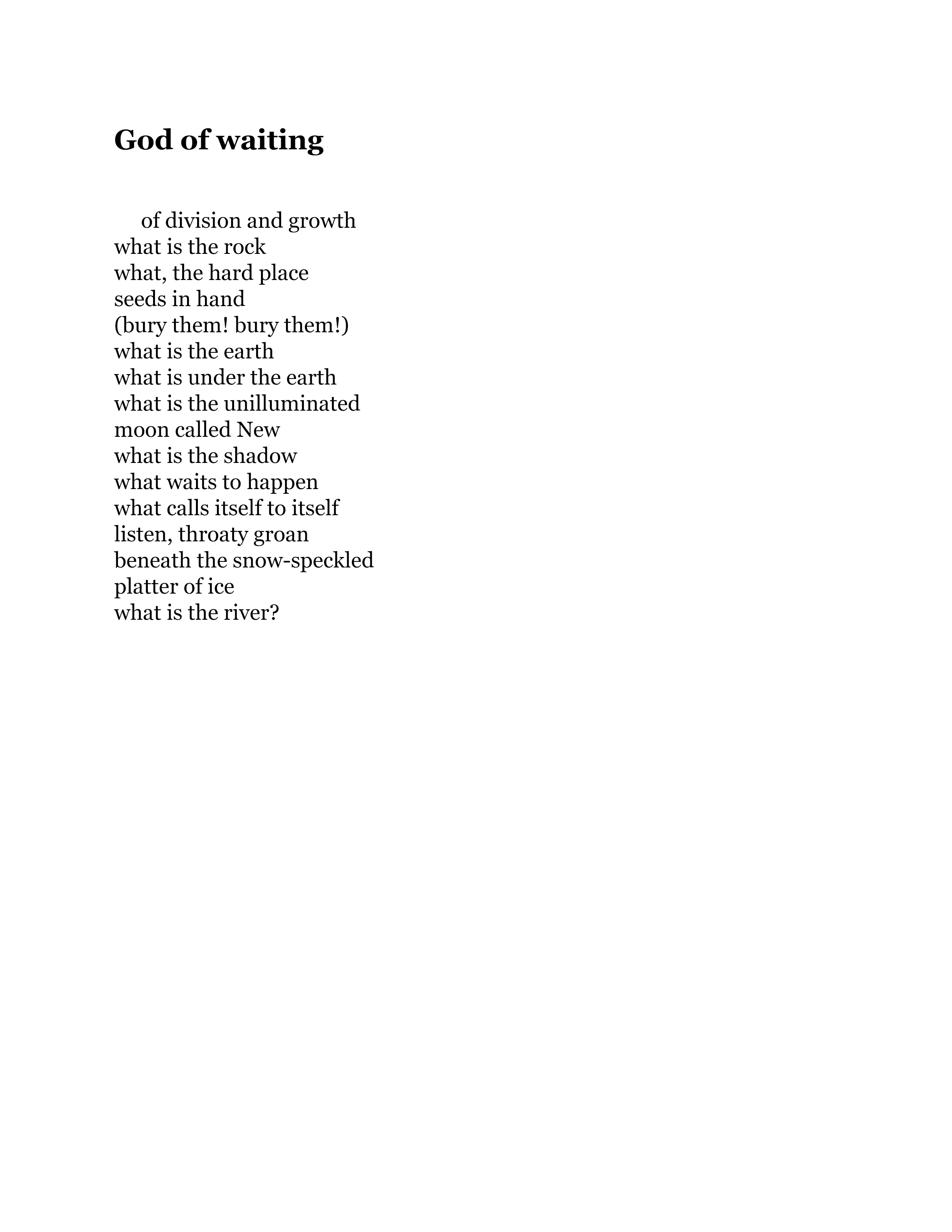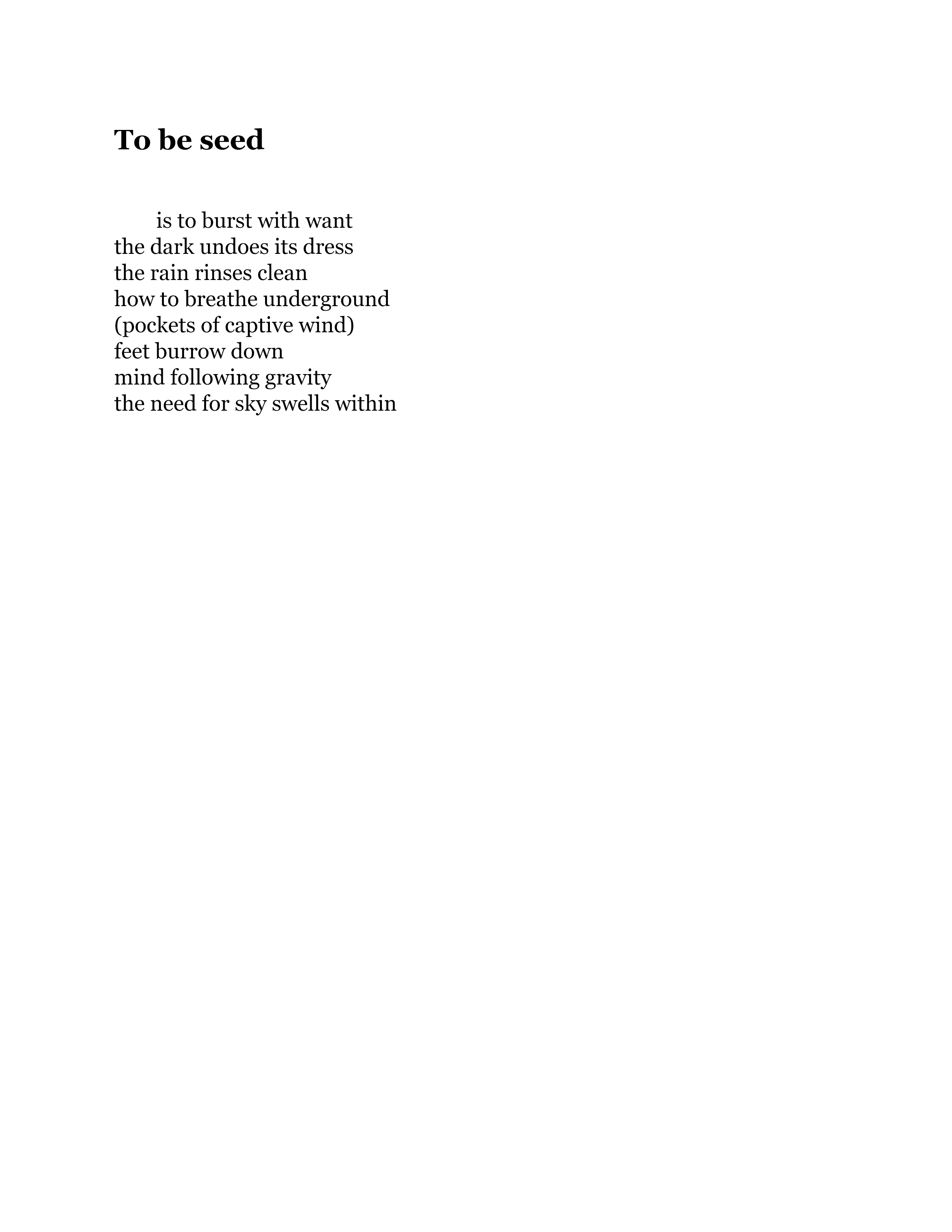3 poems by Mary Buchinger
1 essay by Jessica L. Walsh, on the poems of Mary Buchinger
“Once, in the street,” “God of waiting,” & “To be seed”
Once, in my office, I had a poetry-induced panic attack. I’d just read Nicole Hefner Callihan’s This Strange Garment. Suddenly I wasn’t considering Callihan’s brilliant poems on her own cancer but flashing back to dozens of waiting rooms where my fear churned during my husband’s cancer year. Sensory memories rolled through me: the texture of a tiny notebook I carried that had been dedicated to poem drafts and then abruptly became cancer notes, our daughter’s 10-year-old face when we told her, the scent of the fluid from drains in his neck post-surgery. Sobbing, I texted my friend Amy, who told me “Lie down on the floor.” She explained why, but she hardly needed to; once my whole body was flat on a hard floor, the panic eased just a bit. Enough for me to start the work of not-panic.
These days, I’m consumed with constant fear, which bubbles up like lava into air. The world teeters, and into it I send my daughter, who leaves for college soon. Notwithstanding my excitement for her, I am grief-stricken, terrified. That countless people do this all the time does nothing to calm me, nor does any advice. The short breath chases the deep one, the shallow hyperventilation always almost here, wreathed in my own sense that I’m doing this very, very wrong.
But as I read these poems—“Once, in the street,” “God of waiting,” and “To be seed”—I felt as though I had lain on the floor. Here, all is potential, stored for the slow kinetic transition of what-is into what-could-be. “To be seed // is to burst with want,” the author states, holding onto the moment before growth. The seed’s divine mystery is what it withholds: certainty. We see in it the phantoms of a likely—but not guaranteed—future. The reader is handed imaginings of a seed whose “feet burrow down / mind following gravity / [as] the need for sky swells within.” At this moment, though, we have only the seed. Envision a beautiful life, the poem says, where the seed learns “how to breathe underground” en route to its longed-for sky. See? the poem says to us, What’s beautiful is already there.
In “God of waiting,” again the tension between what is and what waits (wants) to be threads the poem together. The seeds return, the speaker interrupting to urge “(bury them! bury them!).” Here, the reader finds a strangely lovely tension between seen and unseen: “what is the rock / what, the hard place /…/ what is the earth / what is under the earth”? The river, with its “throaty groan / beneath the snow-speckled / platter of ice” is “what calls itself to itself.” We wait with the poem between states of being—not an unsettled or uneasy waiting, but a divine one, as though we ourselves pray to the titular “God of waiting,” a god who rules the liminal with a gentle hand. We do not know what will emerge, but potential is its own glory.
The speaker’s own hand becomes that space between is and could be in “Once, in the street” in which they “held hands with a stone.” The stone warms, nestles into their hand, “and I felt dangerous,” the speaker tells us, feeling the line between holding and letting go, between comfort and launch. Releasing the stone means it may become anything. Perhaps it’s a necessary defense. Possibly it’s lost to the earth, or another hand, or its own shattering. For the moment, “the hand of the stone” in the speaker’s is all about turning what can be held into what can be released. As with all three poems, “Once, in the street” grounds me as I face the unresolved what-might-be. That potential—whatever happens—contains this moment right now, in which growth and beauty already exist. Maybe the best of what poetry can do for us in this moment is what these poems have done for me: give me solid ground where I can lay myself down, just until I catch my breath.



